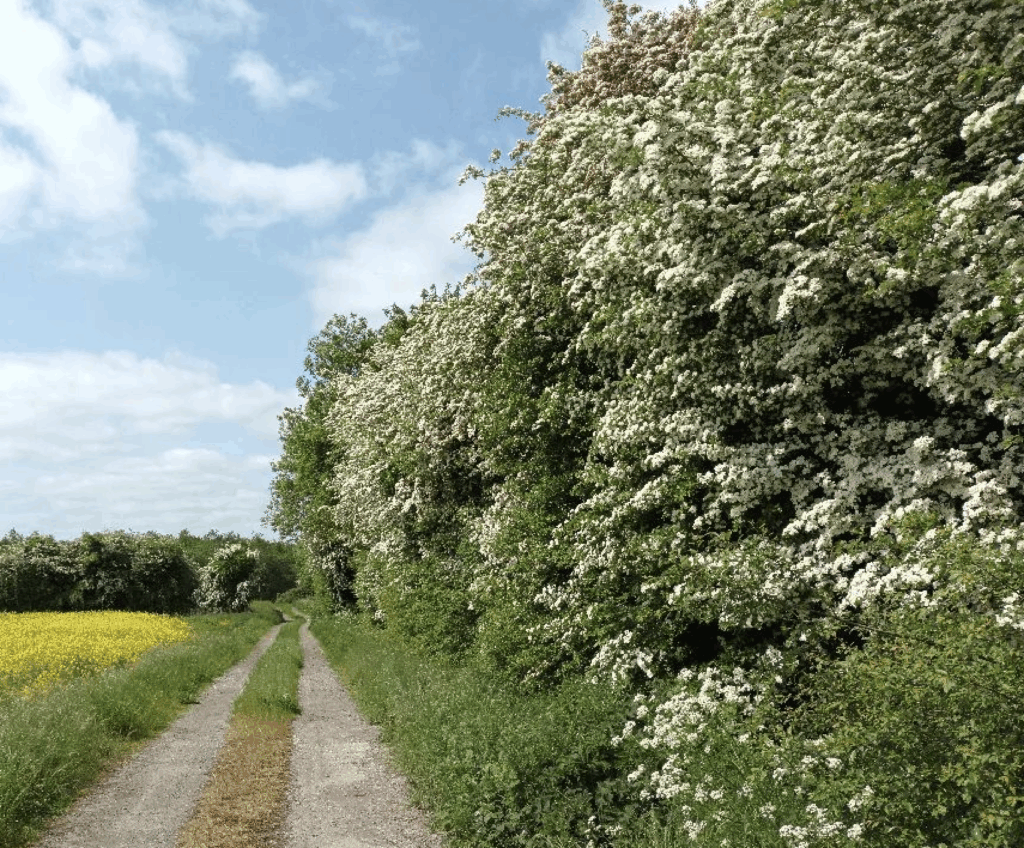By ZWAI member Mary Rafferty

Hedgerows are one of Ireland’s most important natural assets — but they are being mismanaged and underutilised. Poor cutting practices, declining traditional skills, and growing pressure to treat deadwood as fuel are combining to strip hedgerows of their true ecological value. This is not just a missed opportunity for wildlife and climate action — it’s a worrying trend that undermines both.
Most of Ireland’s hedgerows were planted between the 1700s and 1800s under laws that required permanent land boundaries. Many even predate this, with townland boundaries and ancient Gaelic ditches going back to medieval or even Neolithic times. These old hedgerows are rich in biodiversity, historical meaning, and environmental function. But recent decades have seen them neglected or excessively trimmed, often reduced to thin, gappy lines that offer little shelter or food for wildlife. The Monaghan Hedgerow Appraisal Survey showed over 83% of hedgerows in that county were in an unfavourable condition, with more removed each year. Agricultural intensification, a decline in skills like coppicing and laying, and the widespread use of mechanical flails have all taken a toll.
Hedgerows: More Than Just Boundaries
According to Teagasc, hedgerows are not just pretty features of the landscape — they serve a host of environmental functions:
- Wildlife corridors for birds, insects, and mammals
- Carbon storage and flood control through deep-rooted vegetation
- Pollution and erosion filters for water protection
- Natural disease and pest control
- Shelter for livestock and crops
- Cultural and historical value, tying landscapes to their heritage
They are one of Ireland’s few remaining semi-natural habitats. Yet instead of being valued for these services, they’re often treated as waste-producing edges — to be trimmed, cleared, and now, burned.
The Problem with Burning Deadwood
With the recent ban on burning hedge trimmings on farms, Bord na Móna’s Edenderry biomass plant is being promoted as a solution: farmers can now chip and sell their deadwood for energy. While it may seem practical — clearing waste while generating renewable power — this narrative oversimplifies the climate and ecological consequences. Research from the Griffith University in Australia (2021) recommend that deadwood be left where it falls, rather than removed. Taking it away can seriously harm biodiversity and disrupt the natural regeneration of forests. More importantly, it can significantly increase carbon emissions.
Deadwood, when left to rot, releases carbon slowly — much of it remaining trapped in the soil. But when chipped and burned as biomass, that carbon is released immediately. If deadwood worldwide were harvested for energy, it would release eight times more carbon than current fossil fuel emissions. When deadwood is used as biofuel, the carbon it stores is released into the atmosphere
immediately. In contrast, if left to decompose naturally, much of that carbon remains stored in the soil. In fact, global estimates suggest that burning all of the world’s deadwood could release up to eight times more carbon than current annual emissions from burning fossil fuels.
But it’s not just about carbon. Deadwood is a living ecosystem: it supports fungi, insects, birds, small mammals, and provides microhabitats that encourage forest and hedgerow regeneration. A decaying branch on the ground might seem like waste, but it is doing vital, silent work — feeding the soil, storing moisture, supporting biodiversity, and building environmental resilience.
Though hedgerows are technically protected under Ireland’s agricultural and wildlife legislation, enforcement is weak. According to Birdwatch Ireland, only 1% of farmers are inspected annually for compliance with CAP rules. In 2023, a third of all sanctions were for removing trees or hedgerows during the nesting season — highlighting both the prevalence of misuse and the lack of monitoring.
It is easy to set targets for rewilding, climate action, or biodiversity restoration. It’s harder to change cultural perceptions and farming norms. Many hedgerows are trimmed to sterile uniformity out of a sense of tidiness, or because of outdated aesthetics that view wildness as neglect. Meanwhile, the push to monetize “waste” wood as biomass encourages a further stripping of these living boundaries.
We need a different vision — one that sees a tangled, flowering, fruit-bearing hedge not as messy, but as vital. One that values the fallen branch for the life it sustains. And one that treats hedgerows not as problems to manage or resources to harvest, but as ecosystems to protect and restore.
Ireland’s hedgerows are not just leftovers from an older farming system. They are
ancient, living infrastructure. Mismanaging them — whether through flailing, neglect, or burning — wastes a powerful opportunity to protect biodiversity, fight climate change, and sustain the beauty and health of our countryside.
Join us at ZWAI in protecting Ireland’s hedgerows and advocating for sustainable practices— share this message, support local action, and be part of the movement to value nature over neatness. 💚
